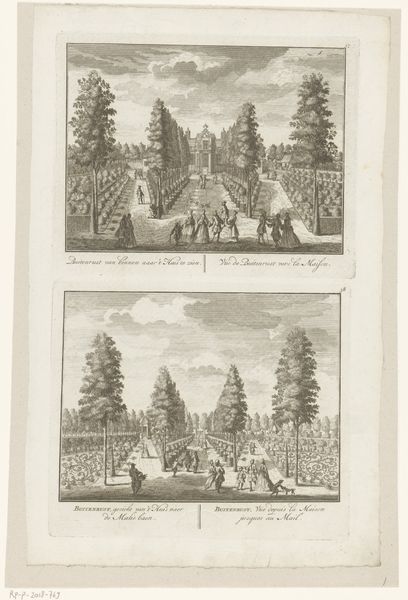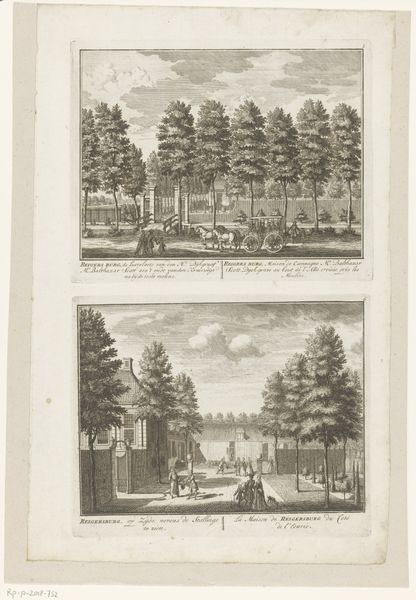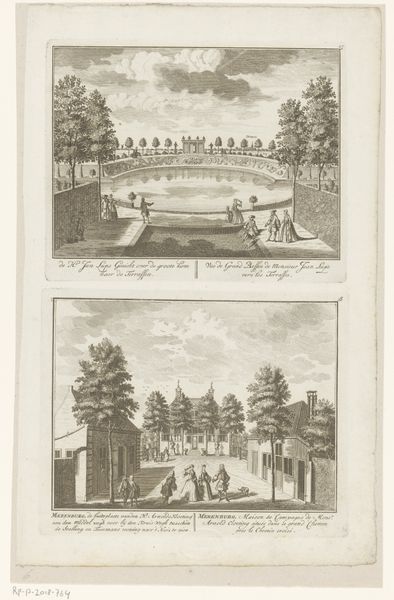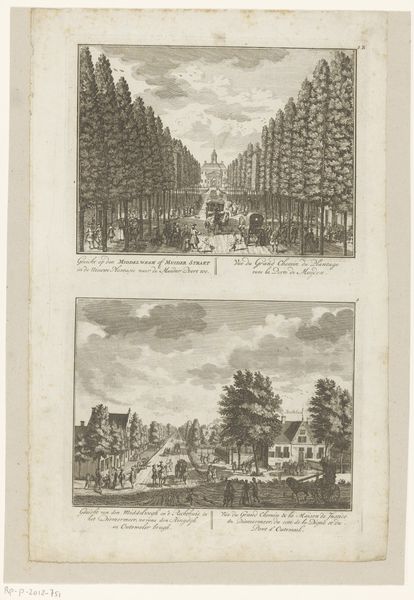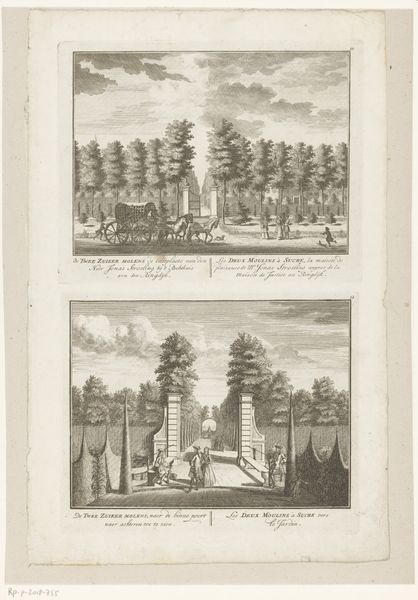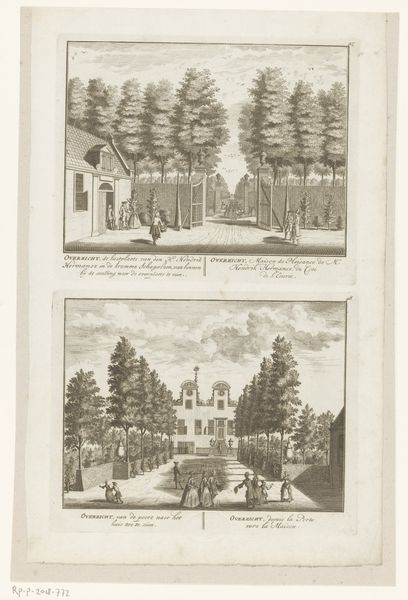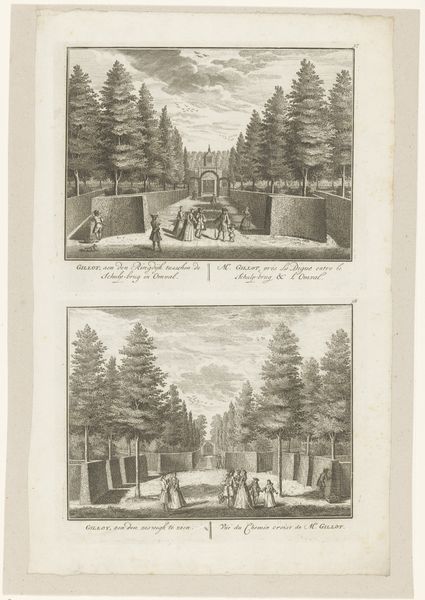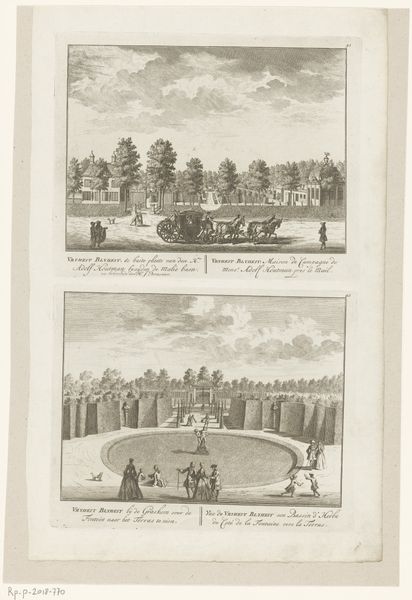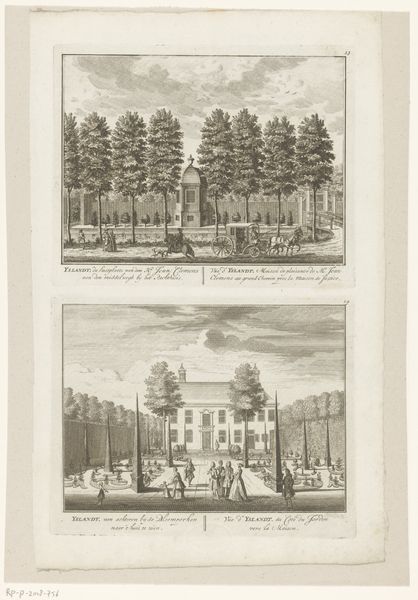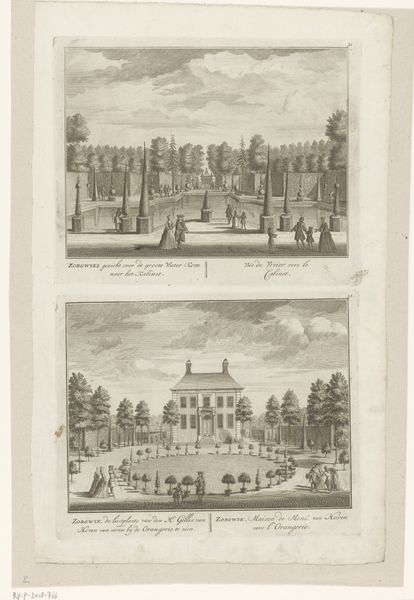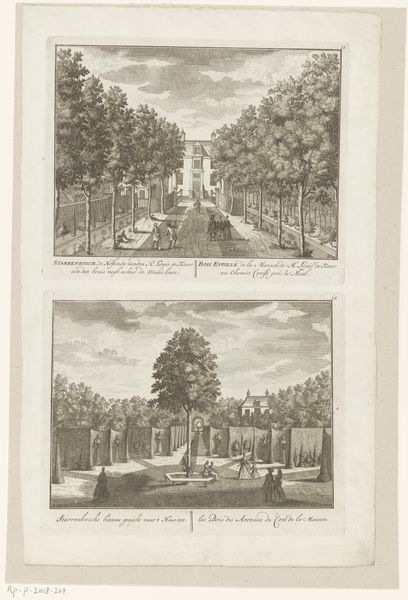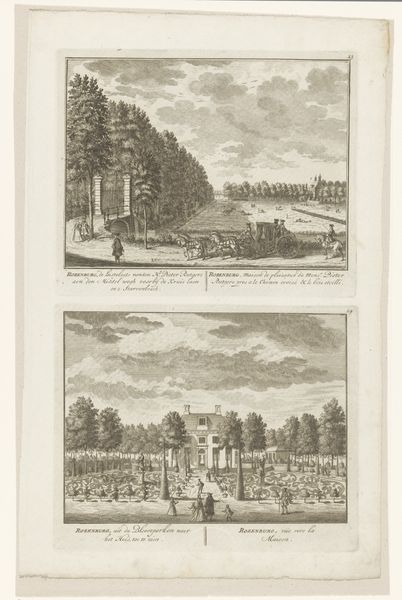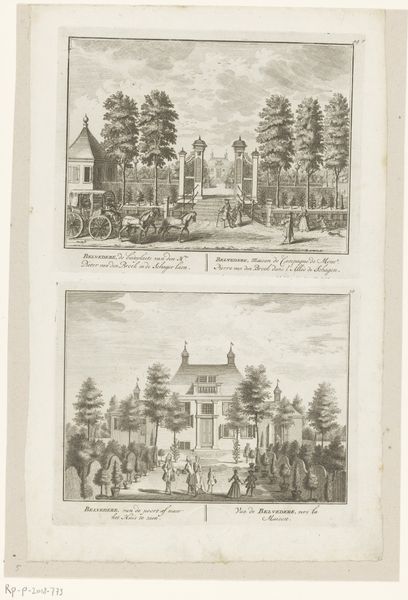
Gezicht op twee vijvers in de tuinen van buitenplaats Vrijheid Blijheid en gezicht op de herberg aan de Maliebaan 1725 - 1768
0:00
0:00
print, etching, engraving
#
baroque
#
dutch-golden-age
# print
#
etching
#
landscape
#
cityscape
#
engraving
Dimensions: height 171 mm, width 213 mm, height 169 mm, width 211 mm
Copyright: Rijks Museum: Open Domain
Curator: This etching offers us two glimpses of leisure and commerce in the Dutch Golden Age. Entitled "Gezicht op twee vijvers in de tuinen van buitenplaats Vrijheid Blijheid en gezicht op de herberg aan de Maliebaan," it depicts scenes near The Hague sometime between 1725 and 1768. The work is held within the Rijksmuseum collection. What do you think of the scenes it captures? Editor: I find myself drawn to the formal geometry depicted. The hard-edged architecture juxtaposed against softer landscapes hints at a deliberate imposition of human will, perhaps speaking to concepts of dominion, ownership, or human/nature relationships…what does that say of us then, and now? Curator: An interesting angle! I'm compelled by the process by which these images came to be. Think of the etching: the tools needed, the skilled labor involved in both creating the printing plate and making impressions. This represents a form of accessible art in that period—multiple impressions meaning broader consumption. These cityscapes also capture the physical making of leisure; carefully ordered landscape design becomes social staging. Editor: Right, the social dimension. These scenes give clues to an idealized civic order reflected by public spaces such as gardens that imply more complex social interactions. Those bodies near the herberg aren't just relaxing. What can these scenes suggest of an era’s perception of commerce and pleasure or power and privilege within urban Dutch culture? Curator: Perhaps the tavern scene hints at underlying currents and hierarchies embedded in everyday commercial settings of the time. The prints highlight that access to leisure depends on socio-economic conditions; a narrative conveyed not just through artistry but availability and distribution too. The act of distributing etched landscapes broadens viewership to more consumers, while inviting us to consider production dynamics and class positions during a booming commercial epoch. Editor: Absolutely, these prints show that spaces – public, private, commercial, residential – convey social status that also communicate specific moral and political beliefs about that social order, how it works and who benefits. Looking closer at these symbolic relationships could help connect Dutch national identity and its historical narratives with global visual languages! Curator: Precisely, studying the work using various methodological frameworks creates avenues to discover deeper historical insights as well as to appreciate nuanced historical context, reminding us that the past contains unresolved socio-economic realities still unfolding today. Editor: Ultimately, that's the true value of imagery; offering reflections through our perspectives, showing us facets of our contemporary concerns from older, formative experiences and eras!
Comments
No comments
Be the first to comment and join the conversation on the ultimate creative platform.

